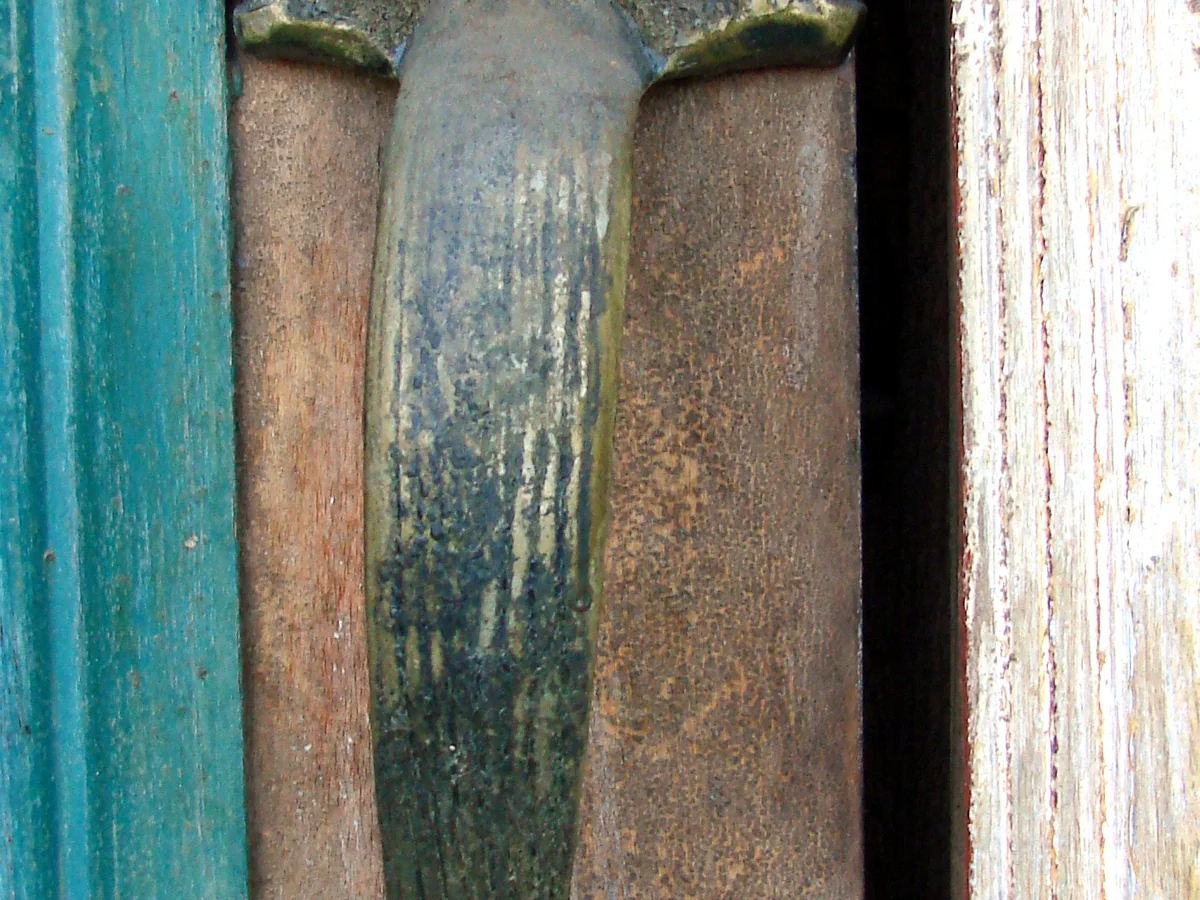How a simple turning device reshaped privacy, security, and architecture.
In this in-depth history, we trace the object’s earliest precursors, the inventions and materials that shaped its evolution, and the cultural meanings it picked up along the way. Across centuries, small design decisions changed how we eat, travel, dress, and shop—one humble tool at a time.
Before Knobs: Latches, Bars, and Bolts
Doors long predate doorknobs. Ancient households secured entries with wooden bars, leather thongs, and sliding bolts. In medieval buildings, ironwork furnished hinges and hasps, while interior privacy relied on simple latches. Openings were architectural as much as mechanical—thresholds that organized movement, light, and status. The idea of turning a grip to retract a latch emerged later, as metallurgy, springs, and standardized parts spread through workshops.

Invention and Proliferation of the Turning Knob
By the 18th and 19th centuries, patents across Europe and North America described rotary mechanisms that drew back latches with a spindle. Casting techniques improved affordability; knobs appeared in brass, bronze, and iron, often paired with ornate backplates that doubled as decoration. In the Victorian era, glass and porcelain knobs flourished, picking up light and fashioning doors as canvases for taste. Mass‑produced mortise locks integrated latches, deadbolts, and keyways into tidy packages, making installation quicker for builders.
Aesthetics and the Home: Materials, Styles, and Status
Hardware catalogs reveal a universe of options: beveled crystal, milk‑glass, japanned iron, carved wood, nickel‑plated brass. Patterns echoed broader design movements—Gothic revival, Arts and Crafts, Art Deco. The knob was tactile branding; the first touch of a room announced an owner’s style. In public buildings, more durable finishes prevailed; in cottages, simple bun knobs sufficed. Over time, standardized rosettes and concealed screws created cleaner silhouettes.

From Knobs to Levers: Ergonomics and Accessibility
Lever handles gained traction in the 20th century, especially in hospitals and public facilities, because they’re easier to operate with limited grip strength or with elbows when hands are occupied. Building codes and accessibility standards (like ADA in the U.S.) accelerated the shift, encouraging levers and reduced operating force. Contemporary hardware balances security, hygiene, and aesthetics, with antimicrobial finishes, keyless entry, and soft‑close latches that hush the modern home.
Preservation, Repair, and Reuse
Historic knobs invite care: set screws loosen, spindles wear, latches stick. Salvage yards and specialty shops offer period parts; makers reproduce classic patterns. Restorers polish brass sparingly to keep patina, replace springs, and shim rosettes to fix wobble. Thoughtful repair extends the life of small hardware that quietly structures daily life.
Curiosities and Fast Facts
- Materials and mechanisms reveal broader industrial trends—when one improved, the other followed.
- Small objects often carry big etiquette rules; what’s polite in one era or region can be taboo in another.
- Mass production standardized dimensions but also inspired niche, artisanal revivals.
- Design changes frequently track public health, safety, and accessibility standards.
Conclusion
The History of the Doorknob is more than a footnote of design history. It’s a case study in how simple tools absorb innovation, shape everyday rituals, and reflect the values of their time. From raw materials to refined mechanisms, the object’s journey shows how a little ingenuity goes a very long way.
Next time you encounter one, consider the craftsmanship and cultural layers packed into such a small thing.
